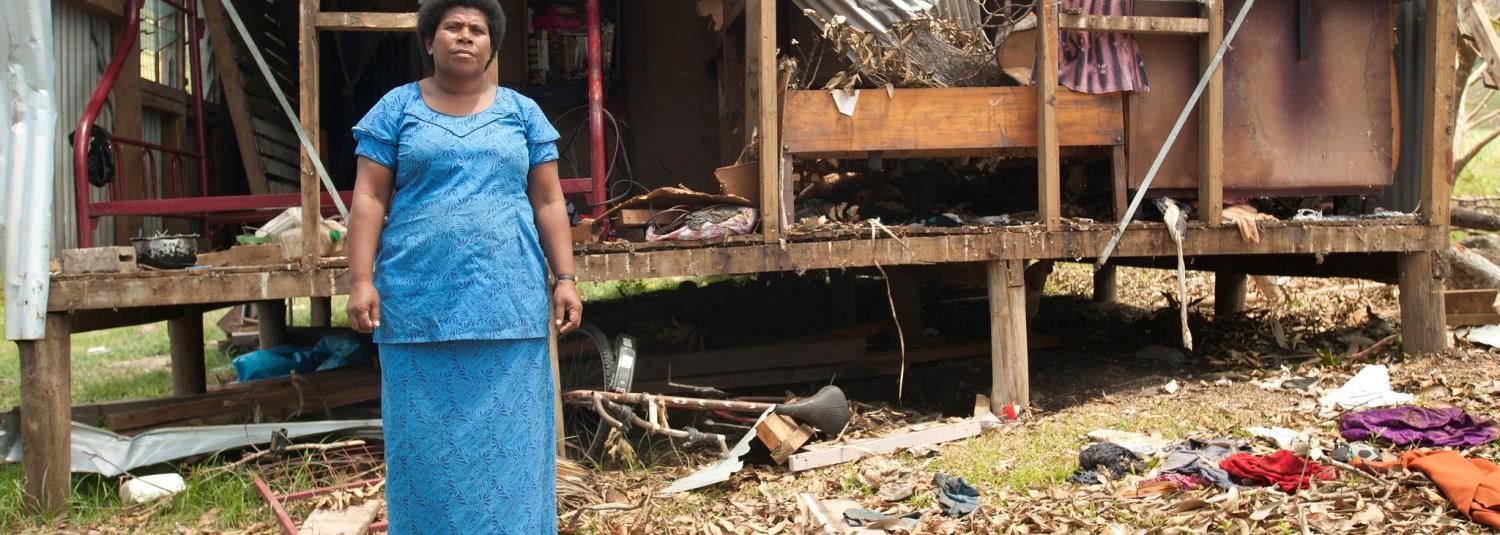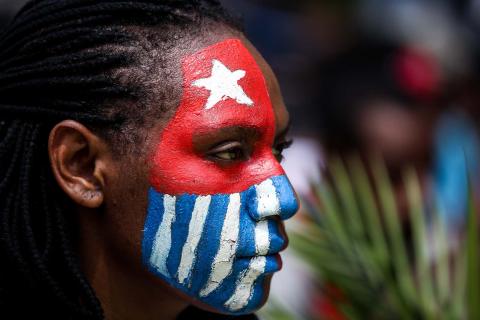Over the next 12 months, the Lowy Institute will release a series of research papers and Interpreter posts examining drivers of instability, and their impact on resilience and fragility, in the South Pacific. Please follow on Twitter: @Lowyinstitute #spfsproject
'Building resilience' has been one of the most popular and enduring buzz phrases in international development in the last few years. It is used frequently in the Pacific Islands, increasingly in relation to climate change, and is a major theme emerging from the UN’s Ocean Conference in New York this week.
I’ve always been a little bemused by aid donors who talk about building resilience in the Pacific. I wonder what it is that Western governments and NGOs think they can teach communities in Pacific Island countries that have demonstrated over and over again their remarkable capacity to survive catastrophe and adapt and thrive in new conditions, usually without any government support. Surely these communities have more to teach Westerners about building resilience than vice versa.
Of course there are many aspects to resilience. Western donors aim to help Pacific Island countries withstand natural disasters, economic downturn, political or social instability, and climate change. When global events such as climate change have a local impact, external support is essential. However, history suggests the impact of many past efforts to build resilience is, at best, difficult to judge.
Last year Australian Prime Minister Malcolm Turnbull told his fellow leaders at the Pacific Islands Forum that Australia was committed to a 'step-change' in engagement with the region, involving 'longer term actions and investment that will support continued stability and resilience'.
The 2016 Defence White Paper states that instability in the South Pacific could have 'strategic consequences for Australia should it lead to increasing influence by actors outside the region with interests inimical to our ours', so 'it is crucial that Australia helps support the development of national resilience in the region to reduce the likelihood of instability. This assistance includes defence cooperation, aid, policing and building regional organisations.'
The White Paper commits the Government to work with 'Pacific Island countries to strengthen their ability to manage internal, transnational and border security challenges, including natural resource protection and build their resilience to natural disasters. This includes working to limit the influence of any actors from outside the region with interests inimical to our own.'
This month marks the end of the 14-year Regional Assistance Mission in Solomon Islands, led by Australia. Canberra hopes that with aid, police and defence cooperation and supporting regional organisations, it can help Pacific Island countries to both avoid instability - forestalling the need for another large-scale intervention - and prepare better to cope with natural disasters. But Australia offered all these kinds of support to Pacific Island countries before the ethnic conflict in Solomon Islands, before the Bougainville conflict, and before the 2006 Fiji coup. Yet it was unable to avert those breakouts of instability. Australia has also consistently helped Pacific Island governments and communities to prepare for and deal with natural disasters, but even the best preparations have proved inadequate when the cyclone is stronger than any previously experienced.
Is there any evidence to suggest that what we are doing now and plan to do in the future will be more effective? It's hard to tell. The Solomon Islands and Bougainville have been relatively peaceful in recent years. The ongoing engagement of the Australian Defence Forces and police in the region may have helped maintain this relatively long period of stability but it is not clear whether this engagement has helped Pacific Island communities become more 'resilient' or to prevent conflict. Australian engagement has also not stopped other actors from outside the region (read China) from extending their influence in the Pacific Islands. Will a stronger focus on national resilience help to limit this influence?
We hear the word 'resilience' after every major natural disaster in the Pacific. Yet however well prepared the affected communities are, there is inevitably a need for significant external assistance that is best delivered by Pacific Island governments working with the Australian and New Zealand governments. After the immediate emergency response passes, Pacific Island countries are encouraged by Canberra and Wellington to focus anew on building resilience so they are prepared to bounce back more quickly next time. But the next time, the cyclone is stronger, the king tide higher, the earthquake more powerful and the flooding more severe. Communities can learn all the right lessons and implement a mix of traditional and modern preparations but natural disasters are unpredictable and emergency humanitarian assistance will usually still be required, even when people are well prepared.
Last year Pacific Island leaders endorsed the Framework for Resilient Development in the Pacific (FRDP) and a new Pacific Resilience Partnership. The FRDP, which has the support of multiple donors, including Australia, makes it clear that climate change and disasters are development challenges, and it advocates for more integrated approaches to address the risks from climate change and disasters. The Pacific Resilience Partnership is meant to coordinate cooperation on implementing the FRDP across governments, the private sector, civil society, communities, regional organisations, and development partners. This is a constructive approach to dealing with climate change but one that will require levels of cooperation and support that have previously been difficult to sustain in the region.
Pacific Islanders must wonder why they are continually pressed to become more 'resilient' to climate change, the greatest threat to their well-being and possibly even the longer-term existence of their countries, while Americans have the support of their President to do exactly the opposite. Unlike the US, Australia remains committed to the Paris Agreement. The actions Canberra takes now to support our neighbours and minimise the impact of Trump’s decision to withdraw from the agreement will be a good gauge of how strong Australia's commitment is to building resilience in the region.


